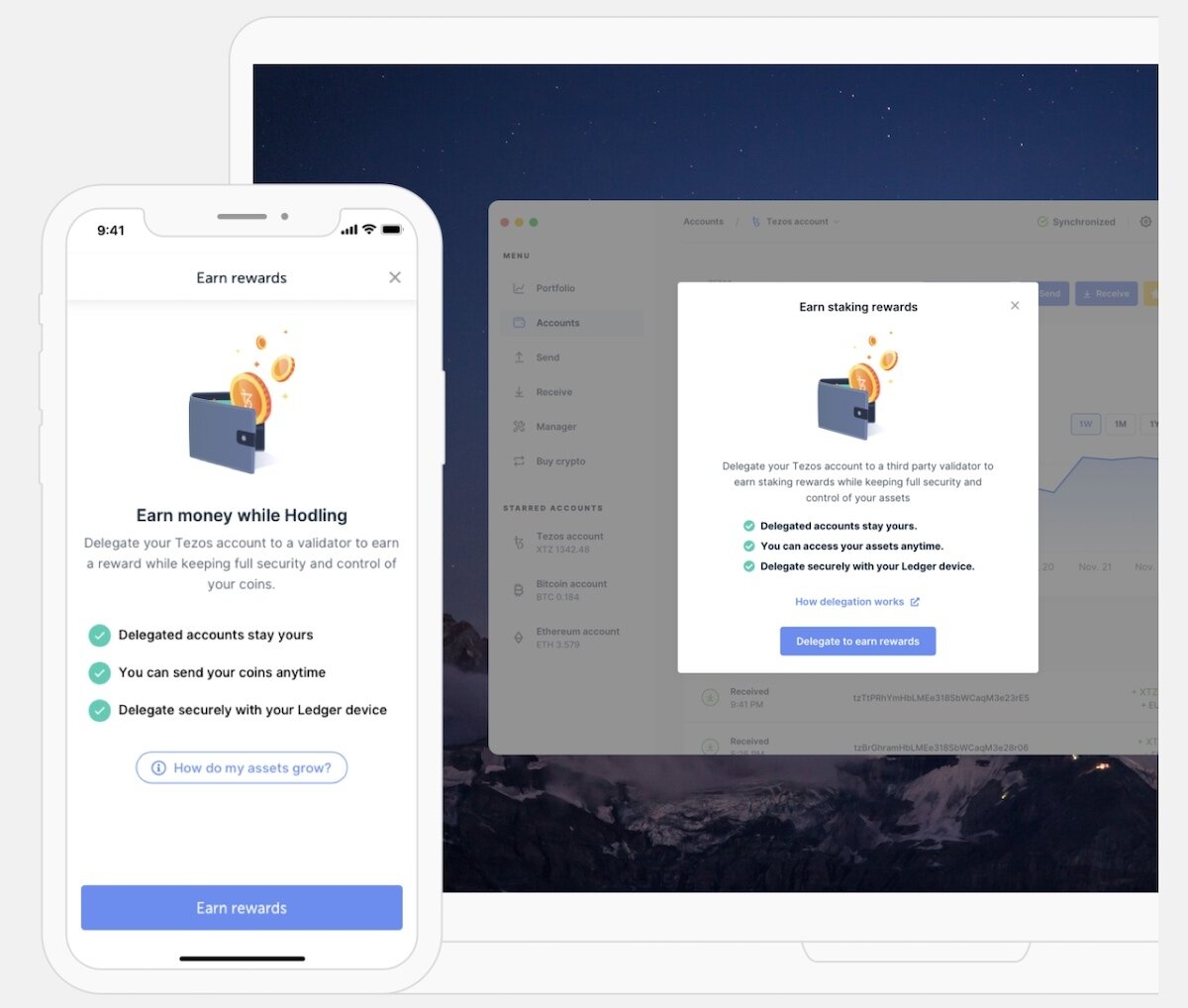What is Proof of Stake?
Before you attempt to stake your first cryptocurrency with a Ledger wallet, it’s important to have a better understanding of what’s happening in the background with this process. It is usually best to try to understand PoS through a comparison with PoW. As most crypto enthusiasts know, the PoW mining process works by having a large number of different computers competing for the right to mine the next block of transactions to be confirmed on the network. The winning miner is rewarded for expending computing power through a block reward that can be made up of newly-issued coin supply, transaction fees, or both. A miner that has more computing power has a better chance of finding the next block, as they will have a greater share of the total amount of computing power pointed at the network.
The best way to understand PoS is to replace the computing power used in PoW with coin holdings. This means that someone who has a larger share of the total coin supply will have a greater chance of finding the next block of transactions and get rewarded for locking up their coins in the staking process. It should be noted that there are a number of potential security and centralization concerns that persist to this day when it comes to the PoS process, as it has not been tested at a large scale for a lengthy period of time. It is likely PoS will be better understood once Ethereum makes the move from PoW to PoS; however, it is generally accepted that there are certain tendencies towards centralization involved in the process that may not end up getting solved.
How to Stake with a Ledger Hardware Wallet
There are two different options when it comes to staking with a Ledger hardware wallet. Users can either use the first-party Ledger Live wallet or opt for a third-party wallet that has enabled support for Ledger’s hardware devices. If you are not already using a wallet that has support for hardware wallets, then Ledger Live will be the best option for you.
To get started with staking via Ledger Live and your associated hardware wallet (You should buy Ledger wallets directly from Ledger), the first thing you will need to do is install the application for the particular coin or coins you would like to stake from the hardware device. To get started, you will need to download the Ledger Live application on your computer and create an account.
You can then click on the Manager section of the Ledger Live wallet with your device connected and select the apps you wish to install onto your device for staking purposes. Once you have an account on Ledger Live and the relevant app installed, you can then transfer the crypto that you would like to stake via your hardware wallet to the Ledger Live wallet.
It should be noted that you can also download apps for pooled staking via the Ledger app store. For example, if you’d like to stake ETH, you may be interested in using the Lido app for decentralized, pooled staking. The specific process for staking will vary depending on which specific coin and app is being used for the staking process; however, the general process is that you will be presented with a screen that allows you to choose how much of your crypto holdings you would like to stake and your rewards for doing so before submitting a transaction that initializes the staking.
It is also important to remember that you can also stake ether and other cryptocurrencies via third-party wallets, which will be the only option possible in some situations. For example, those who want to stake Solana should look into downloading the Phantom wallet and then securing it with a Ledger device.
Which Cryptocurrencies Can Be Staked with Ledger Wallet?
While there are hundreds of different cryptocurrencies that operate on PoS these days, it’s important to note that the Ledger Live wallet only has native staking support for five different crypto assets. These five coins are:
- Tezos
- Tron
- Cosmos
- Algorand
- Polkadot
That said, there are ways to stake other cryptocurrencies via a Ledger hardware wallet. In some instances, you will simply need to download a specific app in the Ledger Live wallet to enable support for staking. For example, you can download the Lido app to enable staking on the Ethereum Beacon Chain today. Additionally, some coins, such as Solana, will necessitate the use of a third-party wallet to stake with a Ledger hardware device.
Other Ways to Earn Returns on Your Crypto with Ledger Wallet
One last thing to remember when it comes to staking is that this consensus mechanism is not the only way you can earn a return on your crypto holdings.
With the development of decentralized finance (DeFi), there are a number of different ways you can earn passive income on your crypto holdings. It is even possible to earn a return on your stablecoin holdings from directly within the Ledger Live app.
With DeFi apps like Aave and Compound, you are able to lend out your crypto holdings to other users who need access to crypto liquidity. Another example of how you can put your coins to work in DeFi is through a process known as farming where you able to earn newly created tokens through a process that is similar to PoS. Liquidity mining is another popular option for earning passive income in crypto; however, it is important to understand all of the risks associated with these types of alternative investment opportunities before you get started.
The Best Ledger for Staking: Ledger Nano X
At this time the best hardware wallet for staking is the Ledger Nano X. The Nano X is the costlier Ledger wallet but there’s a good chance you’ll want to try staking multiple cryptocurrencies.
The cheaper Nano S only has room for roughly three different cryptocurrency apps, which severely limits its staking functionality. You can still get by using a Nano S but it means you’ll spend a lot of time installing and uninstalling apps.
If you’re serious about staking then the Ledger Nano X is probably the better long-term option.
- Flagship Ledger wallet with industrial-grade security with bluetooth
- Supports over 1300 crypto assets and tokens
- Supports all major desktop and mobile operating systems
- Connect to Ledger Live for staking, DeFi, NFTs and more








